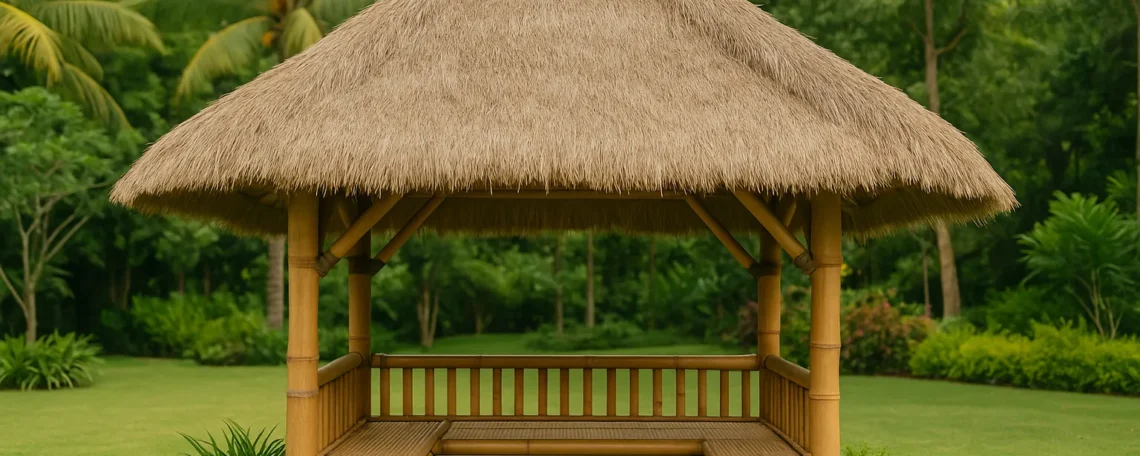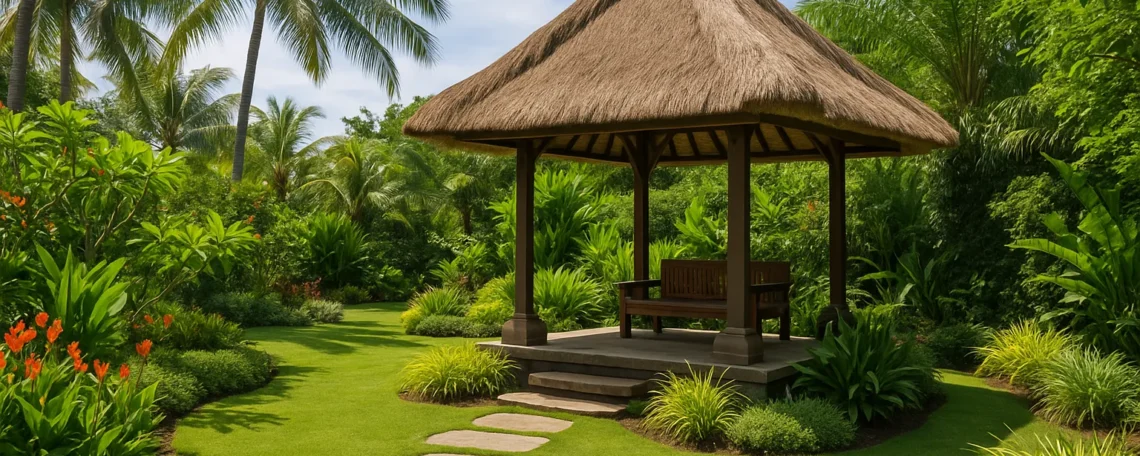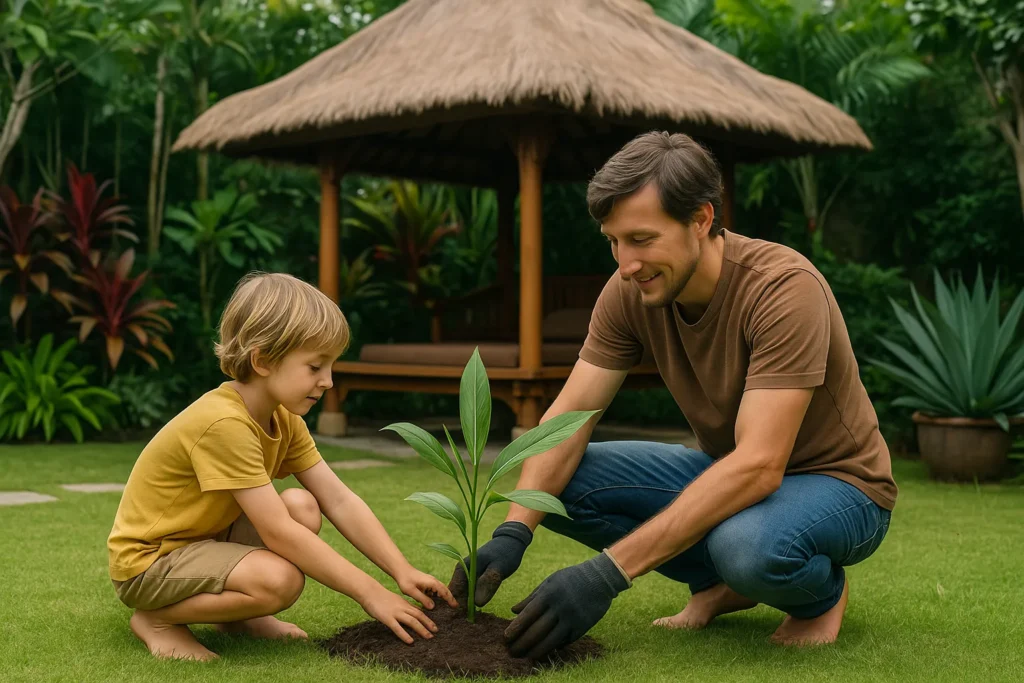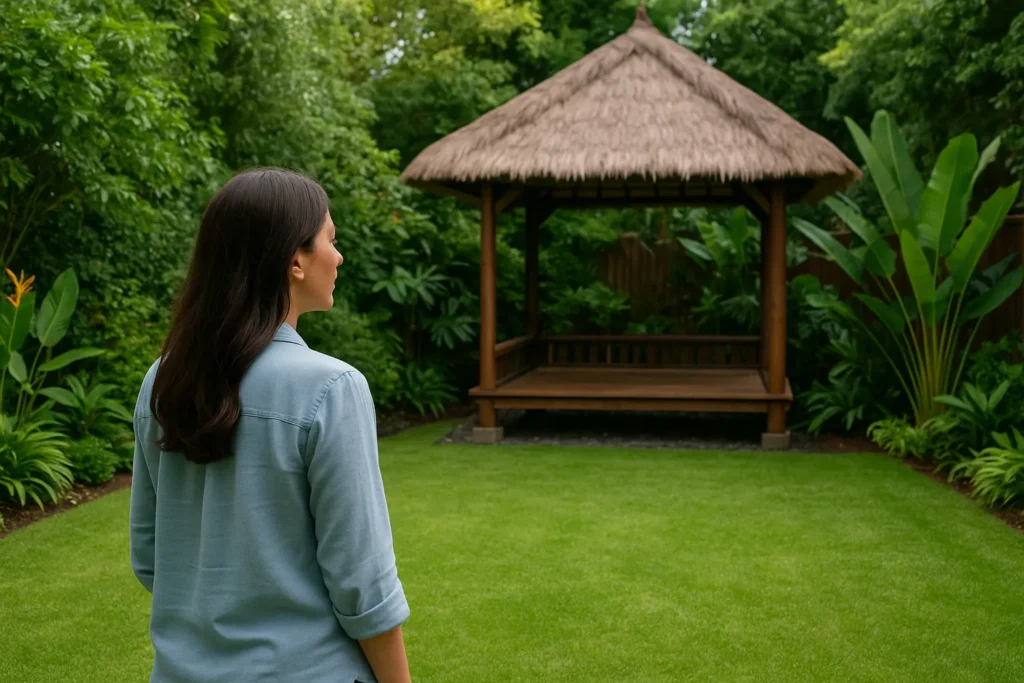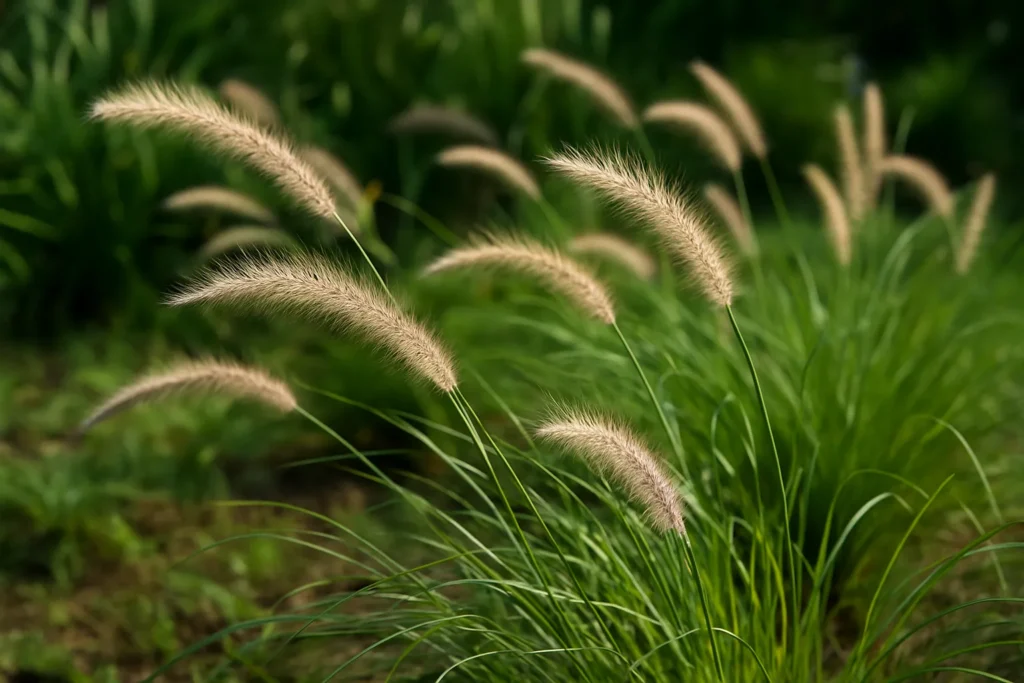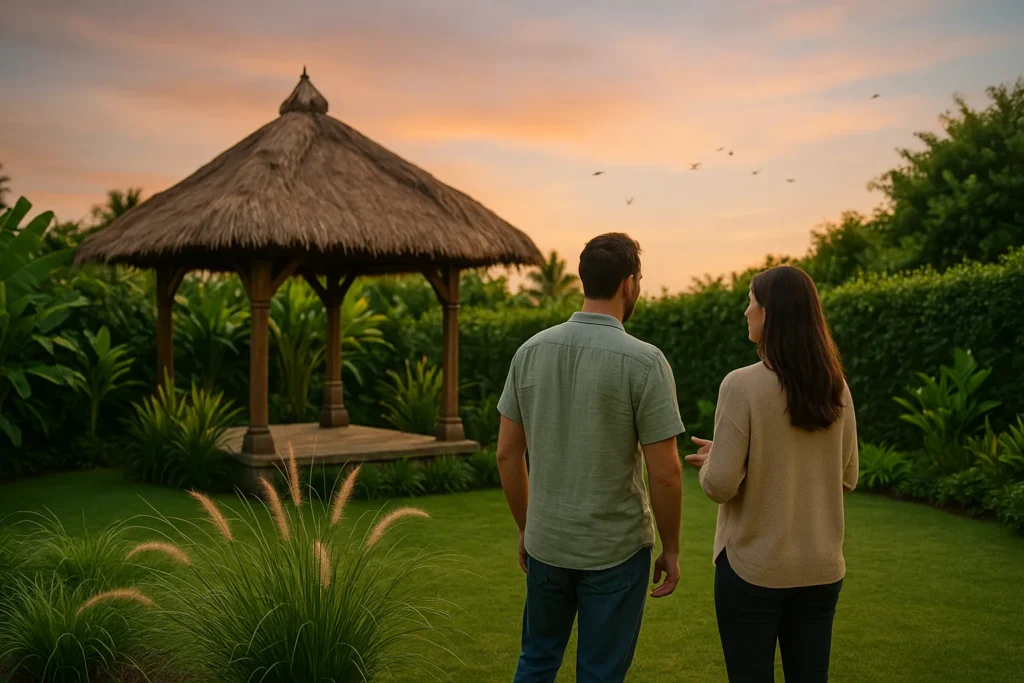A Bali hut is a slice of the tropical lifestyle in your own backyard. These open-air shelters calm any outdoor space, allowing you to slow down, breathe, and enjoy your surroundings. You can drink tea, read, or sit with friends. A hut makes the day feel calm and easy.
Most importantly it creates a mood. It’s like stepping into your own tropical paradise without hopping on a plane. A well-designed one goes well with nature, adds beauty to your garden, and offers real comfort.
This guide is all about building or upgrading your hut using eco-friendly ideas and materials that support a more natural, peaceful retreat.
Let’s take a closer look at how to do that, one thoughtful upgrade at a time.
Making the Right Call on Your Thatched Roof
The right roof for your Bali hut affects how it holds up to weather, how cool it stays, and how much time you’ll spend on repairs. Choosing wisely helps you avoid hassle and keeps your space looking great with less work.
You can keep your Bali hut roof looking natural without using materials that are harsh on the environment. Here are some better choices worth considering:
- Synthetic thatch looks the part, but it’s usually made from plastic. It won’t break down over time and often needs chemical treatments to handle UV exposure. This can raise health concerns, especially if you collect rainwater or spend long hours under the roof. It’s also prone to fading and cracking after a few seasons.
- Alang grass, a popular traditional thatch in Bali. It’s grown locally and hand-cut. It gives a soft, authentic texture to nature. Alang grass needs a yearly check-up and may need small repairs, but it’s more sustainable if you buy it from local, trusted sources. It also smells pleasant after rain and doesn’t trap heat like synthetic alternatives.
- Bamboo panels are strong and lightweight. They create a sharper, cleaner roofline and last longer than most grasses when sealed well. Bamboo sheds less debris, so your space stays tidier during storms or windy days. It’s also less attractive to insects, reducing long-term maintenance.
- Reclaimed palm wood tiles give a natural, rustic finish. They’re UV resistant and usually treated without toxic chemicals. These tiles often come from older plantations, so you’re using material that would otherwise go to waste.
Tip: Ask for material safety info when buying. Some imported materials are treated with chemicals that aren’t allowed in many places. Choosing eco-friendly materials from trusted sources keeps your hut safer and more in line with sustainable practices.
Going Green with Natural Grass
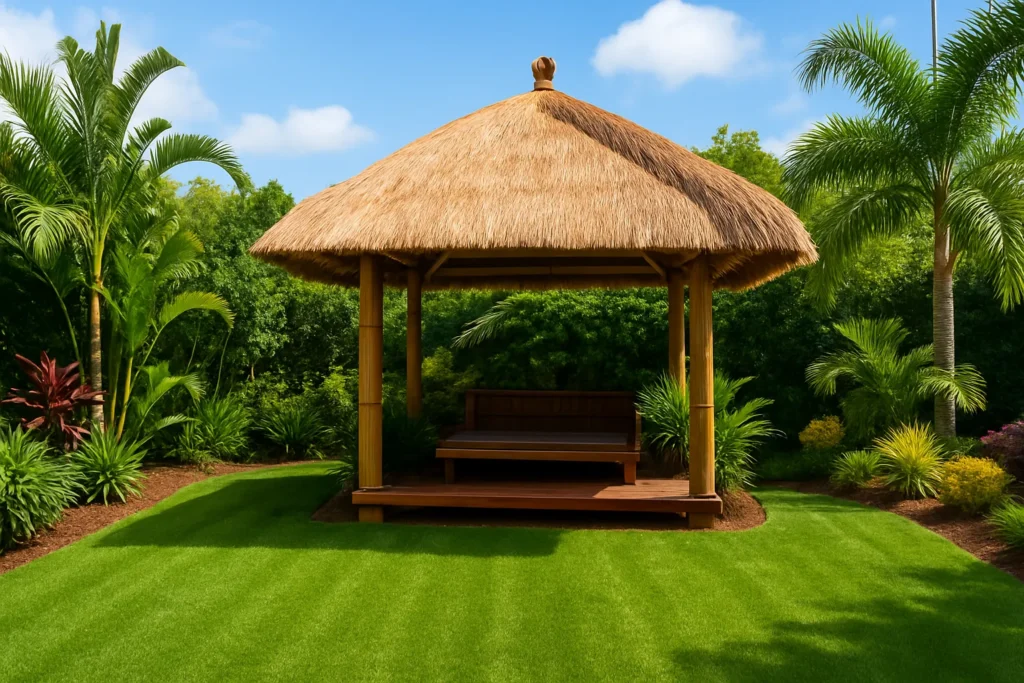
Grass brings cooling benefits, softens hard edges, and adds texture around your Bali hut. For anyone wanting a simple, eco-friendly upgrade, this is a solid place to begin.
Here are a few ways to use it well:
- Natural grass around your hut helps cool the space. It acts as a buffer against heat, keeping the area underfoot significantly cooler on warm days. If your hut is near concrete or tiles, grass can help keep the area cooler by blocking heat from the ground.
- Grass roofing or green walls can insulate your hut. These options help trap cool air inside and block heat from the sun. They also create a natural look that suits Bali-style settings. Just make sure the structure can support the weight, and use liners that stop moisture from leaking through.
- Low-water grasses are ideal for hut surrounds. Native grasses like Zoysia and tall fescue don’t need much water. They are easier to look after. These varieties hold their colour better through dry periods and don’t need frequent mowing.
- Grass matting is great for easy installation in outdoor areas. You can lay it around paths or sitting areas where you want softness without committing to full turf. It’s also easy to lift and replace, which makes maintenance simple over time.
Using natural grass elements creates a comfortable, barefoot-friendly zone around your hut. It softens the look of the yard while helping your hut suit more naturally with the surroundings.
What Coconut Trees Add to Your Bali Hut
Coconut trees are one of the most practical plants you can add near a Bali hut. They grow tall and offer wide, natural shade that lowers the temperature in your outdoor area. That means fewer fans, less direct sun, and more time relaxing outside in comfort.
The benefits go beyond comfort. Coconut trees add structure and shape to your garden. Their long trunks can be harvested after maturity and reused as timber for decks, benches, or low fences. The wood is strong, light, and has a unique texture that suits tropical design.
What’s left after harvest is also usable. You can use shredded coconut husks as mulch to keep the soil damp and stop weeds from growing. The leaves can also be dried and used for small roofing jobs or handmade projects if you like to get creative.
Coconut trees grow best in full sun with well-drained soil. Once they settle in, they rarely need extra care beyond occasional pruning. This makes them a smart option for those looking to enhance their space while keeping the environment in mind.
Remember, adding coconut trees is about shaping your outdoor space with purpose. It reduces reliance on artificial features and celebrates the natural beauty already around you.
Tip: Reuse food scraps or garden waste to create compost around the tree base. This supports healthy growth and ties into broader sustainable practices that align with the core values of low-impact living.
Smart Ways to Build a Bali Hut Near Rice Fields
Building a bali hut near rice fields is a dream for many. The views are open, the breeze is steady, and the green stretches out in every direction. But these spaces also come with responsibilities. Thoughtful design can protect the land, keep your Bali hut stable, and make your time there more relaxing.
Here are smart ways to build that work with the land:
- Use short stilts to raise your hut slightly above the ground. This prevents water damage during the rainy season and keeps airflow moving beneath the structure. It’s a common method in traditional Balinese homes and still works well today.
- Choose open designs that preserve the view. Use wide sliding doors, large windows, or retractable panels to connect your space with the surrounding rice paddies. A clear view helps the space feel calm and makes the hut look bigger without taking up more room.
- Avoid heavy landscaping or hard surfaces near the edge of rice fields. Hard surfaces can block water and harm nearby watering systems. Try using gravel, open decks, or soft native plants to keep the area easy to walk through without stopping water from draining naturally.
- Use sustainable building practices that suit the climate. Think bamboo framing, breathable walls, and natural shading. These choices help your hut blend in and reduce long-term impact on the environment.
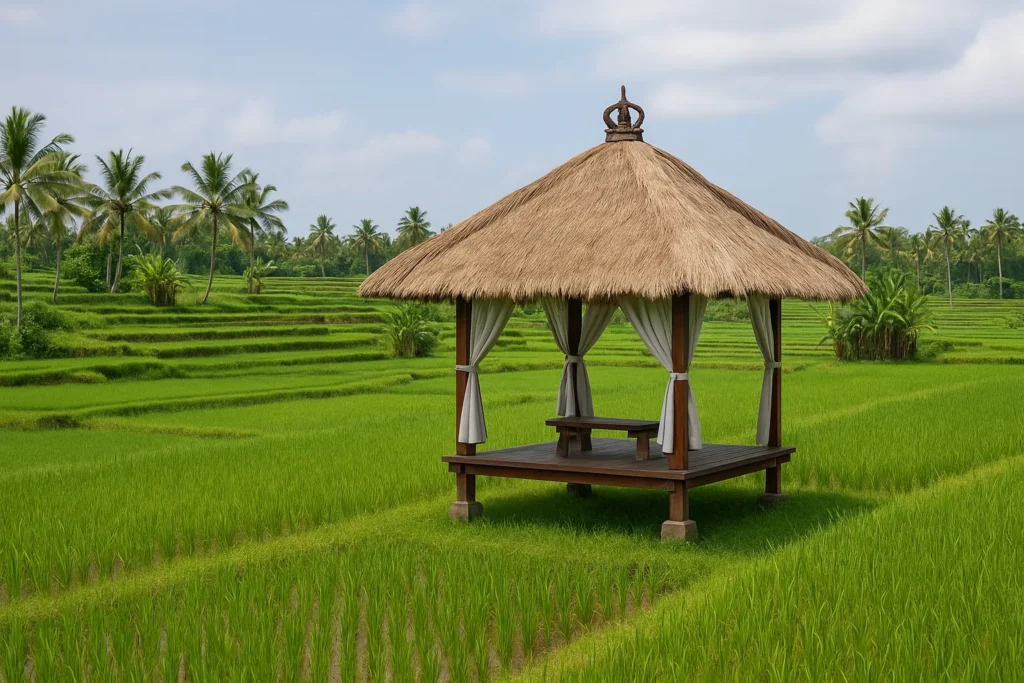
Well-placed huts reflect a deeper respect for the land. Done right, they can increase property value while supporting a more eco-friendly lifestyle rooted in tradition and care.
Eco-Friendly Add-Ons for Your Bali Hut
Making your Bali hut more eco-friendly doesn’t always mean big renovations or expensive tools. Some of the easiest upgrades make the biggest difference. These small changes add comfort and help your hut use less energy and water.
You might start with just one or two changes and see how they improve your space. Even small details like lighting or furniture choices can bring a peaceful, natural vibe to your Bali hut.
Let’s explore some of the add-ons that you can use.
Solar Lights and Natural Airflow
Solar lights are great for walkways and outdoor seating. Choose smaller lights with soft tones for a warm look. Motion sensors or dusk-to-dawn settings work well. To let fresh air move through your hut, leave two sides open or use slatted wood panels. Lemongrass or citronella plants nearby keep the air fresh and help keep bugs away.
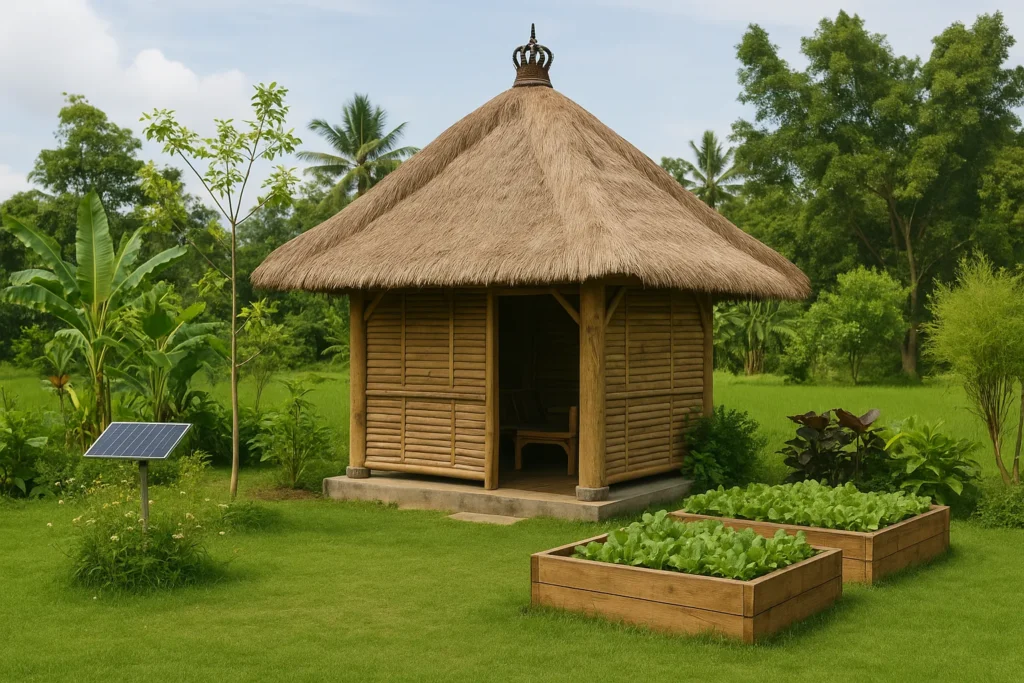
Bamboo and Recycled Furniture
Look at what you already have. Old chairs and tables can often be cleaned up or painted for outdoor use. Bamboo is light, strong, and works well for outdoor benches and side tables. You can also find second-hand pieces made from recycled wood. These choices are better for the planet and still look great.
Water-Saving Ideas
Use a low-flow tap head to cut down water use. You can also connect a simple rainwater barrel to a small shower or rinse area. Add some stones or plants nearby to soak up the extra water. This setup keeps your yard clean and uses less water without needing much effort.
Reuse and Recycle Materials
Old tiles, wood pieces, and broken pots can be turned into garden borders or small paths. Stay away from materials that smell strongly or have labels about chemical treatments. If you’re not sure, ask where the item came from. Clean, untreated pieces are the safest to reuse because they won’t release harmful chemicals into your garden or air.
Make It Your Perfect Place
Your Bali hut should feel like your favourite spot to relax. You might use it for morning coffee, afternoon reading, or having friends over. Small details can make it feel just right.
Here’s how to bring it all together:
- Choose materials that feel natural and soft. Bamboo, cotton fabrics, and light timber create a calm look that works well with Bali-style huts. Add throw pillows, rugs, or even a soft daybed for comfort.
- Use simple DIY touches. You don’t need to buy everything new. Refinish an old stool, hang some string lights, or build a shelf from leftover wood. These small changes make the space feel more personal.
- Pick outdoor furniture that suits the space. Low lounge chairs, foldable tables, or built-in bench seating can save room and keep things tidy. If you have a pool or open yard nearby, go for water-resistant cushions and materials that hold up in the sun.
- Add plants and natural features. Use large pots or hang trailing plants from the roof edge. This brings in more nature and adds colour. Try placing your hut near tall palms or in a corner with shade to stay cool during hot afternoons.
- Keep the layout open and simple. You want room to move and space for guests to sit and relax. Think of it like a mini outdoor living room that brings together the best of nature and comfort.
These touches don’t need to cost much. With a little time and care, your Bali hut can become a beautiful, low-maintenance spot you enjoy every day.
A Peaceful Home That Helps the Planet
Small upgrades can change how your hut feels, looks, and works every day. Use eco-friendly materials, save water, and reuse what you can.
Eco-friendly choices protect nature and keep your space calm.These ideas also support a more sustainable future. They reflect the core values of thoughtful design and simple living. Using solar lights, planting grass, or reusing old garden items can help make your space feel calm and well put together.
Your hut should feel like part of the land, not something placed on top of it. If it’s built with care, it becomes more than a place to sit. It turns into your favourite spot to slow down, breathe, and reconnect. A Peaceful Home That Helps the Planet.
For more ideas, tips, and eco-friendly upgrades, visit Georgia Wiseman.
